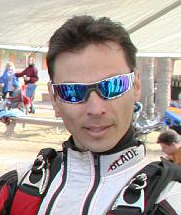Recommended Posts
mccordia 74
QuoteRafts taken out of aircraft aren't really rafts...they are poorly designed wingsuits.
Build one shaped like an S3 instead, theres your wingsuit of the future.
Something like this?
http://www.qualityinflatables.com/images/st3950large.jpg
JC
FlyLikeBrick
I'm an Athlete?
FlyLikeBrick
I'm an Athlete?
QuoteSomething like this?
http://www.qualityinflatables.com/images/st3950large.jpg
BWWAAAHHHH, thats fantastic. I Googled it and found this press release on it
Berlin, 15 May 2006
ESG Elektroniksystem- und Logistik-GmbH and Dräger (both part of the SPELCO Consortium) have designed a parachute system for the special operations units of the German Bundeswehr. The system has already been in use since 2003 but in the future it will be complemented with a special subsystem that is currently being developed in the form of a modular wing that is connected to the parachute. The wing is designed to enable parachutists to cover a distance of up to 200 kilometres (in the development stage).
As it is now, the system allows operation units to jump from a height of about ten kilo-metres and to cover a distance of up to 40 kilometres carrying up to 100 kilogrammes of equipment. Parachutists can thus penetrate into areas that are difficult to reach without their transport planes having to fly into a danger zone. At the same time, tracing this almost 100% silent parachute system using air or ground-based radar systems is extremely difficult. Night operations or operations under adverse weather conditions are possible.
With the newly developed wing, the radius of operation for the parachute is increased considerably. The parachutists can reach their target at a greater speed and are even less detectable than before. Also, the new wing allows them to operate unaffected, to a large extent, by wind conditions. The wing will be equipped with a guiding and stabilisation system. The integration of small turbo jet drives for UAVs in the second development stage will make it possible to carry persons over long distances without the need to jump from an extreme height.
Visitors at the ILA 2006 can view the parachute system with the wing and a range of subsystems (such as a navigation or an oxygen supply system) at the ESG booth in Hall 7.
"It's just skydiving..additional drama is not required"
Some people dream about flying, I live my dream
SKYMONKEY PUBLISHING
Some people dream about flying, I live my dream
SKYMONKEY PUBLISHING
AveE 0
i believe, that the future looks like this :)
http://www.metacafe.com/watch/160791/he_can_fly/
http://www.metacafe.com/watch/160791/he_can_fly/
notsane 0
Imagine taking something like this http://www.skymall.com/webapp/skystore?process=prodDisplay&action=&pid=102135333&catId=10800 out the door and actually getting it to fly. THis one seems to be a little more stable than the Manta. If any of these things could be coaxed to fly instead of fall slowly you'd really have something. Openings might be a little dicey with the huge burble, but with a wing loading like this ... maybe you could land it. I will personally buy a beer for the first person to do it (I'll bring it to you in the hospital too if needed). 





I kept restraining myself from putting in further to this thread mostly because both you and Darren kinda stomped my idea and both of you have either superior experience or better physiological data available to you, and I would have been defending the ideas for the sake of defending them. Not the right way to do it. I needed to put more thought into it, to figure out how to articulate what the intuitive understanding voice in the back of my head kept trying to tell me. I had a hunch there was more to it, and hunches are usually half-formed ideas based on unarticulated understanding.
It took me till now to figure out HOW to defend them. I don't have the expertise you guys do, but consider this:
It isn't an answer I have for you, its another question based on the observation that we are not airplanes: If my thinking is flawed...
Why do raft dives work?
If my thinking is flawed, they should not work, at all. They should collapse and fold in half like an overloaded airframe the second they hit the air and load up. But they don't.
Rafts inflated tightly enough hold up just fine with people in them, at least for awhile.
They aren't dynamically adjusting, so their structure fails halfway through the dive as they deflate, creating the usual comical clusterfuck we've all seen on raft dive videos as the raft gets squished by increasing air pressure, but WE are and we don't. The S3 legwing is just as tough to close at the bottom as the top. Build a raft like an S3 legwing only with real ram-air airlocks and funnel-shaped inlets and you could ride it till pull altitude.
Rafts taken out of aircraft aren't really rafts...they are poorly designed wingsuits.
Build one shaped like an S3 instead, theres your wingsuit of the future.
Just a thought. I've been wrong before...
Share this post
Link to post
Share on other sites